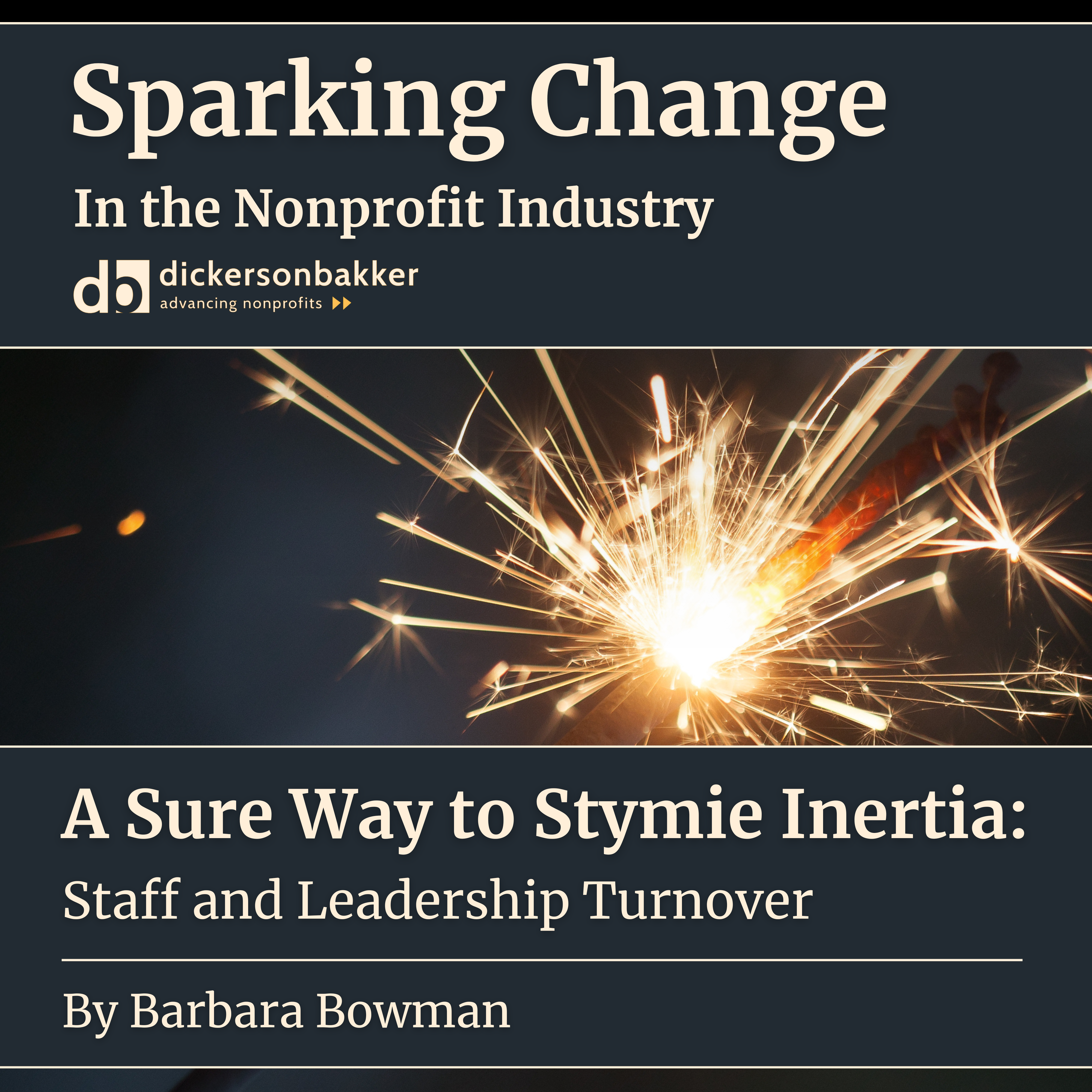I experienced the reality of leadership turnover smack dab during a significant change initiative. The executive team I served on recognized that in the next five to seven years, 25%-30% of our experienced international field and U.S. based leaders would be exiting the organization because of retirement. After a slow start, project “succession planning” was building momentum after surveys, interviews, data analysis, and design labs.
We had one massive flaw with our thought process. We quickly realized that our data analysis did not consider early retirements or new employment. This realization hit home when without warning, three of our five-member executive team announced early retirement or new positions outside the organization. Whenever leadership changes, staff follow suit. For the few remaining executive leaders, we had days when it seemed all our efforts were for nothing. The two-year change initiative seemed destined to fail as reality unfolded.
The unbridled truth is that nonprofit staff and leadership turnover is troublesome on many fronts, including decreased productivity levels, disruptive workflows, increased costs, lowered morale, employee apathy, and reduced trust, but never so much as when large change initiatives are underway.
Most organizations underestimate how long it takes to create sustainable change that embeds itself in the culture; because of this, staff and leadership turnover is not considered or planned for, as in my case study. There may likely be a change in executive or functional leadership during a two-year change initiative.
In Leading Change by John Kotter, Kotter states that effective change entails a process that creates power and motivation to combat and overcome waves of inertia, such as leadership turnover. Secondly, change is almost impossible to enact unless it's driven by high-quality and consistent leadership. Leadership turnover and the ensuing gaps in developing vision and strategy, cascading communications, guiding functional leadership coalitions, and short-term team accountability contribute to a term called “transformation deficit,” a gap between the required change effort and employee willingness to tolerate yet another change initiative.
A Gartner survey revealed that employees’ willingness to support enterprise change collapsed to just 43% in 2022, compared to 74% in 2016. The difference in employee attitudes in six years is alarming. From my experience in executive leadership and consulting with numerous nonprofits over the last five years, nonprofits are not immune to the “transformation deficit” dynamics. The global COVID pandemic, followed by market uncertainty and inflation, ushered in such unanticipated, comprehensive change that organizational cultures highly underestimated the need for a proactive response, one that specifically attuned to the possibility of senior leadership burnout and turnover and fallout amongst functional staff.
So, what can be done to mitigate the effects of executive and functional leader turnover during times of change?
- Reduce the leadership burden for key executive leaders. Organizations are more vital when leadership is shared, and management delegated.
- Gain widespread employee buy-in before launching a change initiative that transcends any leader’s opinions, beliefs, or understanding of the future.
- Pull back on the accelerator and the need to sprint through change initiatives. Find the right balance between too fast and too slow.
- Resist the temptation to enact more than two change initiatives in any time frame.
- Repeatedly and succinctly communicate a compelling vision of the future that permeates the culture far beyond the current executive team.
- Satisfy employees' essential but often ignored human needs for belonging, connection, and respect. This is true for executive and functional leaders, a fact that is frequently overlooked.
- Leaders must prioritize change initiatives, showing employees where to invest their energies.
- Manage change fatigue by building proactive rest, celebration, and opportunities to enhance creativity.
- Focus on building team resilience.
Boards need to acknowledge the changing role of today’s nonprofit leaders. Board members often fail to realize that nonprofit leaders frequently navigate a fine line between executor and healer. Thus, it must become commonplace for leaders to pursue leadership coaching, where they can feel safe exploring intrapersonal and interpersonal challenges, participate in leadership process groups with peers from other nonprofits, seek out mentors, and take adequate time off to seek the wholeness of mind, body, and soul.
Nicholas Janni, author of the 2023 Business Book of the Year, Leader as Healer, believes that leaders who effectively overcome the threats of the 21st century must continue to excel in logic, reason, discernment, and strategic forecasting but, to an equal level, embody empathy, deep listening, the ability to inspire authentic engagement and collaboration, and a sense of service, mission, and purpose. Leaders must have the space to mature their gifts and equally develop their character to withstand the pressures of significant organizational change.
Leadership turnover is inevitable, especially as boomers retire from the workforce. It can’t be stopped but can be mitigated by planning well before enacting significant organizational change. Enacting organizational change effectively is not for the faint of heart, but seeing a change initiative through to the end has the potential for extraordinary rewards and satisfaction. Do not start what you cannot finish! Everyone will respect you for it.


